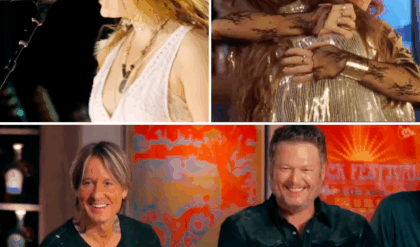When The Marvels hit theaters on November 10, 2023, expectations were sky-high for the Marvel Cinematic Universe’s (MCU) 33rd film. As a sequel to the billion-dollar success Captain Marvel (2019), the movie promised a thrilling team-up of Carol Danvers (Brie Larson), Monica Rambeau (Teyonah Parris), and Kamala Khan (Iman Vellani), directed by rising star Nia DaCosta. Yet, the film made headlines for all the wrong reasons, earning the dubious distinction of the MCU’s lowest-grossing release, with a mere $197 million worldwide against a budget exceeding $220 million. Fans and critics were quick to point fingers, but in a candid interview on August 19, 2025, DaCosta broke her silence, insisting that the film’s failure was not her fault. Citing production challenges, studio interference, and external factors beyond her control, the director’s revelations have sparked renewed debate about the MCU’s struggles and her groundbreaking role as its first Black female director.
A Promising Vision Derailed
The Marvels was pitched as a bold evolution of the MCU, blending cosmic adventure with a team dynamic that showcased three powerful women. DaCosta, fresh off her critically acclaimed horror film Candyman (2021), was handpicked by Marvel Studios president Kevin Feige for her unique vision. Her pitch centered on a story that united Captain Marvel, Ms. Marvel, and Monica Rambeau in a high-stakes mission to save the universe from a Kree warlord, Dar-Benn (Zawe Ashton), whose actions destabilized reality. The film’s lighthearted tone, vibrant visuals, and emphasis on the trio’s chemistry were meant to contrast the darker, more serious entries of the MCU’s Multiverse Saga. DaCosta envisioned a “fun, cosmic romp” that leaned into the characters’ humanity, with Kamala’s fangirl energy and Monica’s emotional depth balancing Carol’s stoic heroism.
However, the road to release was fraught with obstacles. DaCosta revealed that the film’s production timeline ballooned from two years to three and a half due to four release date changes, driven by Marvel’s crowded schedule and the lingering effects of the COVID-19 pandemic. “It was a marathon, not a sprint,” she said in her interview. “Every time we thought we were close, the date shifted, and it threw everything off.” These delays disrupted the creative process, forcing DaCosta to juggle pre-production for her next project, Hedda, while still overseeing The Marvels’ post-production remotely. She emphasized that her decision to start Hedda was not an abandonment of the film, as some reports claimed, but a necessity due to scheduling conflicts. “Everyone was clear on what The Marvels was supposed to be,” she said. “I didn’t walk away from it dramatically—it was about logistics.”
Studio Interference and Creative Control
One of DaCosta’s most striking claims is that The Marvels was not the film she set out to make. “The way Marvel makes movies is very different from how I’d ideally make a film,” she admitted. The MCU’s production model, often described as a “machine,” relies heavily on studio oversight, with Feige having the final say on creative decisions. DaCosta, known for her auteur-driven approach, found herself navigating a system where her vision was reshaped by studio notes and last-minute changes. “You have to lean into their process and hope for the best,” she said. “But the best didn’t happen this time.”
The film’s final cut, she revealed, diverged significantly from her original pitch and even the first version she shot. Scenes were altered, reshoots were ordered, and the tone shifted to align with Marvel’s broader Multiverse Saga narrative. A much-discussed musical sequence on the planet Aladna, where Carol sings with a prince, was a point of contention. While DaCosta intended it as a playful nod to Disney’s princess legacy, some fans and critics found it jarring, arguing it undermined the film’s stakes. “That sequence was meant to be a moment of levity, but it got blown out of proportion,” DaCosta explained. “It wasn’t the heart of the movie I wanted to tell.”
The studio’s push to tie The Marvels to other MCU projects, including WandaVision and Ms. Marvel on Disney+, added complexity. Monica and Kamala, introduced in these streaming series, were unfamiliar to casual audiences who hadn’t subscribed to Disney+, potentially alienating viewers. DaCosta noted that the film’s reliance on prior knowledge of these characters made it less accessible. “We were building on stories that not everyone had seen,” she said. “That was a challenge I couldn’t fully control.”
External Factors: Strikes, Trolls, and Fatigue
Beyond production woes, The Marvels faced external hurdles that DaCosta believes contributed to its poor performance. The 2023 SAG-AFTRA strike, which lasted 118 days and ended just two days before the film’s release, prevented the cast from promoting the movie. Stars like Larson, Parris, and Vellani, whose charm and enthusiasm could have boosted buzz, were sidelined, leaving marketing efforts to trailers and social media. “We couldn’t do the usual press circuit,” DaCosta said. “It’s hard to build excitement when your stars can’t talk about the film.”
The film also became a target for online trolls, who labeled it “too woke” due to its female-led cast and diverse representation. DaCosta, like Larson before her, faced backlash for speaking out against this criticism, with some fans unfairly branding the film a failure before its release. “The noise around the movie was louder than the movie itself,” she said. “It’s tough when you’re fighting a narrative that’s already been written about you.” This backlash echoed the challenges faced by Captain Marvel, though that film benefited from its timing between Avengers: Infinity War and Avengers: Endgame, grossing $1.13 billion. The Marvels, by contrast, arrived during a period of perceived superhero fatigue, with audiences growing weary of the MCU’s relentless output of films and Disney+ series.
Disney CEO Bob Iger, in comments made at the New York Times’ DealBook Summit in November 2023, pointed to production challenges during the pandemic as a factor in the film’s failure, noting a lack of on-set supervision. DaCosta pushed back against this narrative, clarifying that while COVID restrictions were a hurdle, the studio’s broader approach to filmmaking was a bigger issue. “It’s not about one thing like supervision,” she said. “It’s about a system where the director is one piece of a much larger puzzle.”
A Milestone Amidst the Fallout
Despite its box office struggles, The Marvels marked a historic achievement for DaCosta, who became the first Black female director to helm an MCU film. The movie also achieved the biggest debut for a Black female director, a milestone DaCosta takes pride in. “I’m honored to have broken that barrier,” she said. “But I wish the conversation was more about the work than the numbers.” The film’s critical reception was mixed, with a 62% score on Rotten Tomatoes, but audiences gave it an 82% approval rating, praising the chemistry between Larson, Parris, and Vellani. Many fans, particularly younger viewers, connected with Kamala’s infectious enthusiasm and the trio’s dynamic, which DaCosta considers a victory. “If kids saw themselves in Kamala or Monica, that’s what matters to me,” she said.
The film’s failure has not dimmed DaCosta’s passion for filmmaking. Since The Marvels, she has completed 28 Years Later: The Bone Temple, set for release in 2026, and remains a vocal advocate for diverse voices in Hollywood. She expressed gratitude for the opportunity to work with Marvel, despite the challenges. “It was a learning curve,” she said. “It made me stronger as a filmmaker, navigating a system that’s so different from my own process.”
The MCU’s Broader Struggles
DaCosta’s comments have reignited discussions about the MCU’s trajectory post-Avengers: Endgame. The Multiverse Saga, which includes films like Ant-Man and the Wasp: Quantumania and Thor: Love and Thunder, has faced criticism for inconsistent quality and an overreliance on interconnected storytelling. The Marvels’ $47 million domestic opening weekend—the lowest in MCU history—highlighted these struggles, with some attributing it to audience burnout. Disney’s push for Disney+ content, with series like Secret Invasion and She-Hulk receiving mixed reviews, has diluted the theatrical experience, according to analysts. “The MCU trained audiences to expect big moments in theaters,” DaCosta noted. “When you spread that across streaming, it’s hard to keep the same momentum.”
The film’s fallout has prompted Disney to reassess its strategy. With only Deadpool & Wolverine slated for 2024 and a streamlined slate for 2025, including Captain America: Brave New World and Fantastic Four, the studio is focusing on quality over quantity. DaCosta remains optimistic about the MCU’s future, suggesting that her experience could help pave the way for other diverse directors. “The industry is learning,” she said. “It’s not perfect, but it’s evolving.”
A Director’s Resilience
Nia DaCosta’s defense of her work on The Marvels underscores the complexities of directing within the MCU’s high-stakes machine. While the film’s box office failure was a setback, her insistence that it wasn’t her fault highlights the myriad factors—studio decisions, external pressures, and timing—that shaped its fate. The movie, despite its flaws, showcased her ability to craft compelling character moments and vibrant visuals, earning praise from fans who appreciated its heart. As The Marvels finds a second life on Disney+, where streaming numbers have been strong, DaCosta’s legacy as a trailblazer endures.
For fans, her candid revelations offer a glimpse into the challenges of balancing creative vision with studio demands. As she moves forward with new projects, DaCosta remains a powerful voice in Hollywood, proving that even in the face of a flop, resilience and talent shine through. The Marvels may not have soared at the box office, but its director’s story is far from over.





